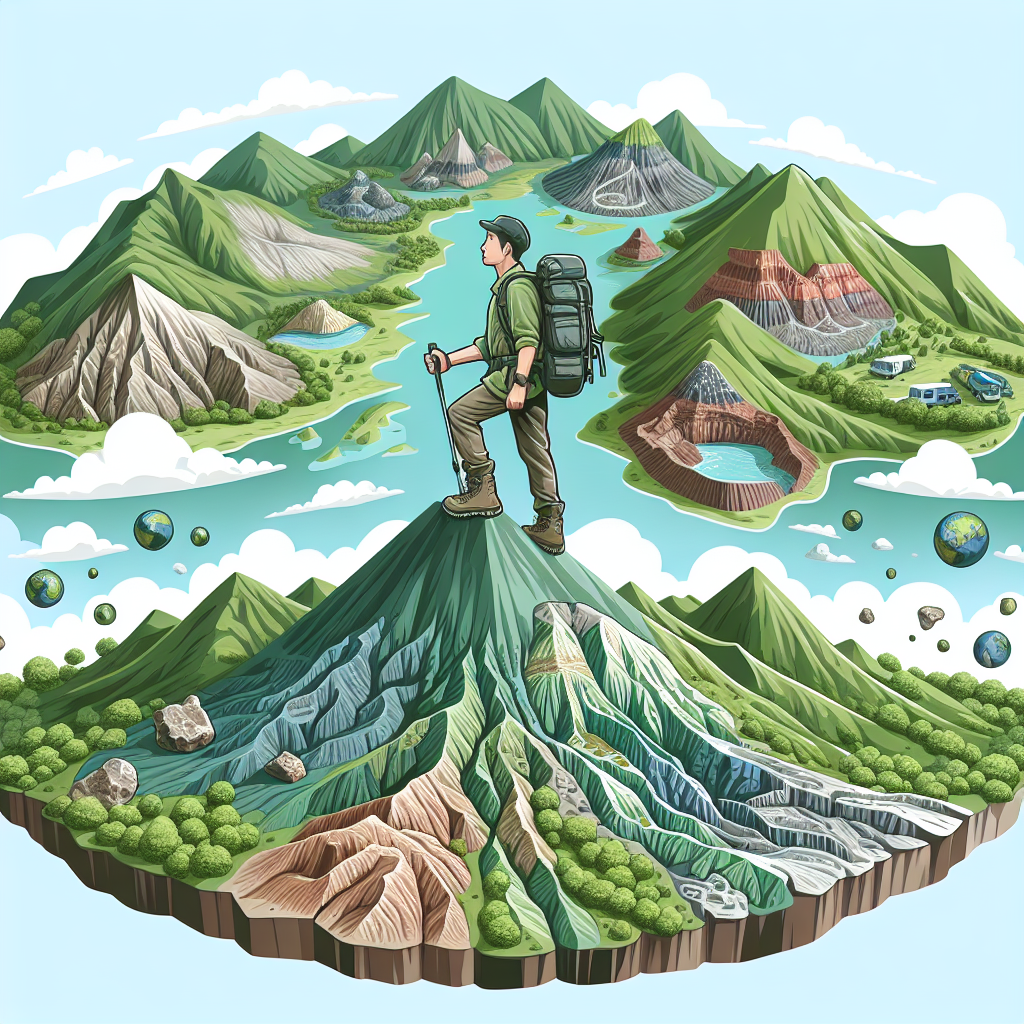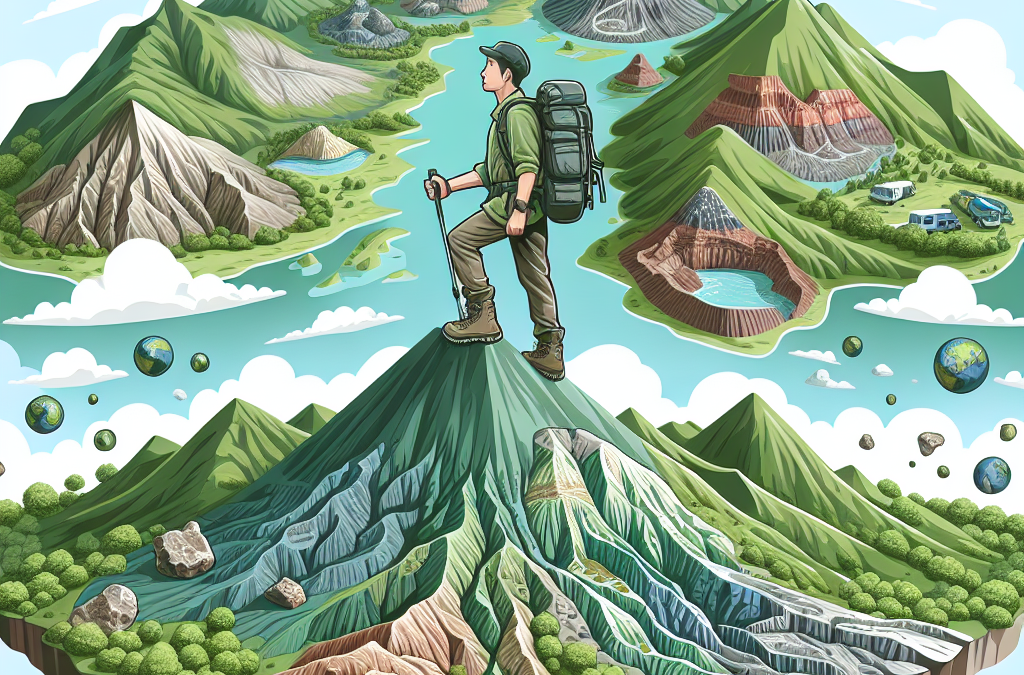You’re about to embark on a thrilling journey! “Hiking and Geology: Understanding the Landscape” will equip you with the knowledge of how the captivating landscapes you trek through during your hiking adventures were formed. This article discusses fascinating geological processes that have molded our earth over millions of years, inviting you to appreciate the rocks and valleys in a new light. It’s no ordinary hiking guide; this is an adventure into the heart of Earth’s history, turning each hiking trail into a geological timeline waiting for your discovery. This fresh perspective, merging your passion for hiking with a newfound interest in geology, will undeniably enrich your outdoor experiences.
Relation Between Hiking and Geology
When it comes to hiking, it’s not just about physical endurance or outdoor equipment, it’s also about understanding the landscape around you. As you embark on your trek, you’re stepping on layers of geological history.
Importance of geology for hiking
You might be wondering, why does geology matter to hiking? Well, geology determines the types of terrains and ecosystems you’ll encounter during your hikes. It helps you appreciate why certain landscapes form the way they do. Moreover, knowing some basic geological facts can enhance your understanding and enjoyment of the trails you explore.
Geology’s influence on hiking trail formation
The formation of hiking trails is largely influenced by the underlying geology. For example, trails in mountainous regions are often characterized by rocky, steep paths due to uplift and erosion processes, while trails in flat, desert regions may be sandy due to weathering and accumulation of sediment over time.
Basic Geology Concepts for Hikers
As a hiker, gaining a basic understanding of geological concepts can enhance your outdoor adventures. Let’s delve into a few key concepts.
Geology’s role in creating landscapes
Geology plays a significant role in shaping the landscapes that make our trails scenic and sometimes challenging. For instance, volcanic activities may form mountains and valleys, while erosion can create cliffs and gorges.
Understanding the rock cycle
One basic concept you should know is the rock cycle. It describes the processes by which rocks transform from one type to another – from igneous to sedimentary to metamorphic, and then back again. Recognizing different types of rocks can give you insights into the geologic history of a location.

Understanding Geological Forms Along Hiking Paths
While hiking, you’ll come across various geological forms and features. Here’s what to look for:
Identifying different rock types
Knowing your rocks can add a new layer of interest to your hikes. For instance, sedimentary rocks like sandstone or limestone may contain fossils, hinting at the area’s prehistoric life. Metamorphic rocks like marble are transformed by heat and pressure, and igneous rocks, like granite, are formed from cooled lava or magma.
Recognizing the signs of erosion and weathering
Erosion and weathering are geological processes that shape hiking trails over time. Erosion is the movement of materials by elements such as wind and water, while weathering involves the breaking down of rocks. Signs of these processes include features such as rounded hilltops, river valleys and rock formations.
Significance of Landform Observation
Observing and understanding landforms along your hike can provide insights into the geographical history of the area, impact on biodiversity, and trail changes.
How changes in landforms can affect hiking trails
Geological changes such as erosion, landslides, and floods can dramatically alter hiking trails. They can create new paths, block existing ones or make trails more dangerous. As a hiker, remaining observant of such changes is vital for safety and navigation.
Impact of landforms on the biodiversity of hiking trails
Landforms also play a crucial role in biodiversity. The geological conditions of an area contribute to the variety of plant and animal species present. For instance, a trail running alongside a river might be rich in flora and fauna, while a desert trail may have adapted species that can survive harsh conditions.

Hiking in Different Geological Regions
Different geological regions offer unique hiking experiences due to their distinct landforms and landscapes.
Hiking in mountainous regions
Mountainous regions, formed by tectonic forces, offer challenging hikes with steep, rocky paths. These areas tend to have diverse landscapes including valleys, rivers, and an abundance of wildlife.
Hiking in desert regions
Desert hikes offer wide, open spaces often characterized by sand dunes and unique rock formations. These regions are usually flat, making the hikes less physically demanding. However, hiking in desert environments requires careful planning due to extreme temperatures and scarcity of water.
Hiking in coastal regions
Coastal hiking trails offer beautiful sea views, marshlands, and beaches. Coastal features are largely formed by wave action, erosion, and sediment deposition, creating unique landscapes rich in biodiversity.
Case Study: Hiking the Grand Canyon
The Grand Canyon serves as an awe-inspiring example of Earth’s geological grandeur, making it a popular destination for hikers worldwide.
Geological history of the Grand Canyon
The Grand Canyon is a testimony to over two billion years of Earth’s geological history. Its formation is primarily the result of erosion by the Colorado River, which has carved its path deep into the layers of sedimentary rock.
Exploring various trails and geological features in the Grand Canyon
The Grand Canyon offers diverse trails showcasing its rich geology. Here, hikers can explore various geological features including buttes, spires, and the vividly colored rock layers that record the passage of time.
Case Study: Hiking In The Rocky Mountains
Another popular destination for hikers is the Rocky Mountains.
Geological formation of the Rocky Mountains
The Rockies were formed by a significant event in Earth’s history, the Laramide Orogeny, which resulted in the uplift of the mountain range. Overtime, glaciation further shaped these mountains into the impressive landscapes we see today.
Effects of glaciation on hiking trails in the Rockies
Patterns of glaciation can be seen in the Rockies’ hiking trails, with features like U-shaped valleys, cirques, and moraines. These give hikers a sense of the geological history that unfolded over millions of years.
Safety Concerns Related to Geology While Hiking
While hiking, it is crucial to understand the inherent risks related to geology.
Risk of landslides and rockfalls
In areas prone to heavy rains, or with loose, unstable soil, there can be a risk of landslides and rockfalls. Always research the local geology and weather before a hike and adhere to any signs or warnings along the trail.
Understanding ground stability
Ground stability is an important aspect of hiking safety. Unstable ground can be due to various geological factors such as soil composition, water content, and slope angle. Being observant of these can help in choosing safe paths.
Conservation of Geological Sites and Trails
While enjoying the natural beauty around us, we must also remember our responsibilities towards the conservation of these geological sites.
Role of geologists and hikers in conservation
Geologists play a crucial role in conservation by studying and monitoring geological changes, while hikers can contribute by following etiquettes like not disturbing wildlife, staying on designated trails, and leaving no trace.
Minimizing the impact of hiking on sensitive geological areas
Some geological areas are highly sensitive to human activities. To protect these, hikers should respect restrictions on access, avoid removing rocks or fossils, and minimize their environmental footprint as much as possible.
Future of Hiking and Geology
Hiking and geology will continue to be entwined in the future, with potential challenges and opportunities.
Impact of climate change on hiking trails and geology
Climate change poses a significant threat to our trails and landscapes. Increasing temperatures can lead to thawing permafrost, rising sea levels, and intensified erosion, thereby affecting the geography of hiking trails.
Prospects of geotourism
One positive prospect is the growth of geotourism – tourism that sustains or enhances the geographical character of a place. It incorporates components of geology, culture, and biodiversity, providing travelers with a comprehensive, immersive experience. This can boost appreciation for geology, aiding in its conservation while enhancing the hiking experience.
Remember, as you explore different trails and appreciate the beauty around you, you’re also witnessing the fascinating narrative of our planet which has been unfolding over billions of years.
Happy hiking, and happy exploring!

